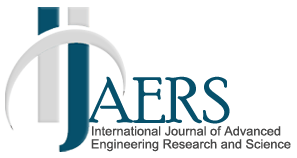Sustainable MOFs for Pb2+ Removal: Adsorption, Regeneration, and Environmental Impact |
| ( Vol-11,Issue-12,December 2024 ) OPEN ACCESS |
| Author(s): |
Beni Jared Passi, Ma Xuli, Paul Afreh, Wang Peifen, An Xiaowei |
| Keywords: |
|
Lead (Pb2+) Removal, MOF Synthesis Methods, MOF-Based Adsorbents, Cost-Effectiveness, Environmental Remediation, Industrial Wastewater Treatment. |
| Abstract: |
|
Heavy metal contamination, particularly with lead (Pb2+), poses significant environmental and public health risks. In response to this, metal-organic frameworks (MOFs) have arisen as effective adsorbents due to their high surface areas, tunable structures, and reusability. This study reviews advancements in MOF-based adsorbents for lead removal from wastewater, with a focus on cost-effectiveness, adsorption efficiency, and environmental impact. Among various MOFs examined, ZIF-67 and ZIF-8 show superior performance, achieving high adsorption capacities (up to 1978.63 mg/g) and excellent regeneration potential, maintaining effectiveness over multiple cycles. Cost analyses reveal that while some MOFs, such as Cu-MOFs/CMFP, incur higher synthesis costs, others like UiO-66-(OPO3)X and Cs-ZIF-8 offer a balance between cost and performance, rendering them economically viable for large-scale application. Further, the environmental sustainability of MOFs is enhanced through greener synthesis methods and biodegradable components. Although challenges remain in scaling production and ensuring durability in varied wastewater conditions, this study demonstrates the potential of MOFs as efficient, sustainable, and cost-effective adsorbents for heavy metal remediation, paving the way for safer water treatment solutions. |
| Article Info: |
|
Received: 02 Nov 2024, Receive in revised form: 06 Dec 2024, Accepted: 12 Dec 2024, Available online: 19 Dec 2024 |
|
|
| Paper Statistics: |
|
| Cite this Article: |
| Click here to get all Styles of Citation using DOI of the article. |
- Track Your Paper
- editor.ijaers@gmail.com
- ISSN : 2349-6495(P) | 2456-1908(O)



Advanced Engineering Research and Science